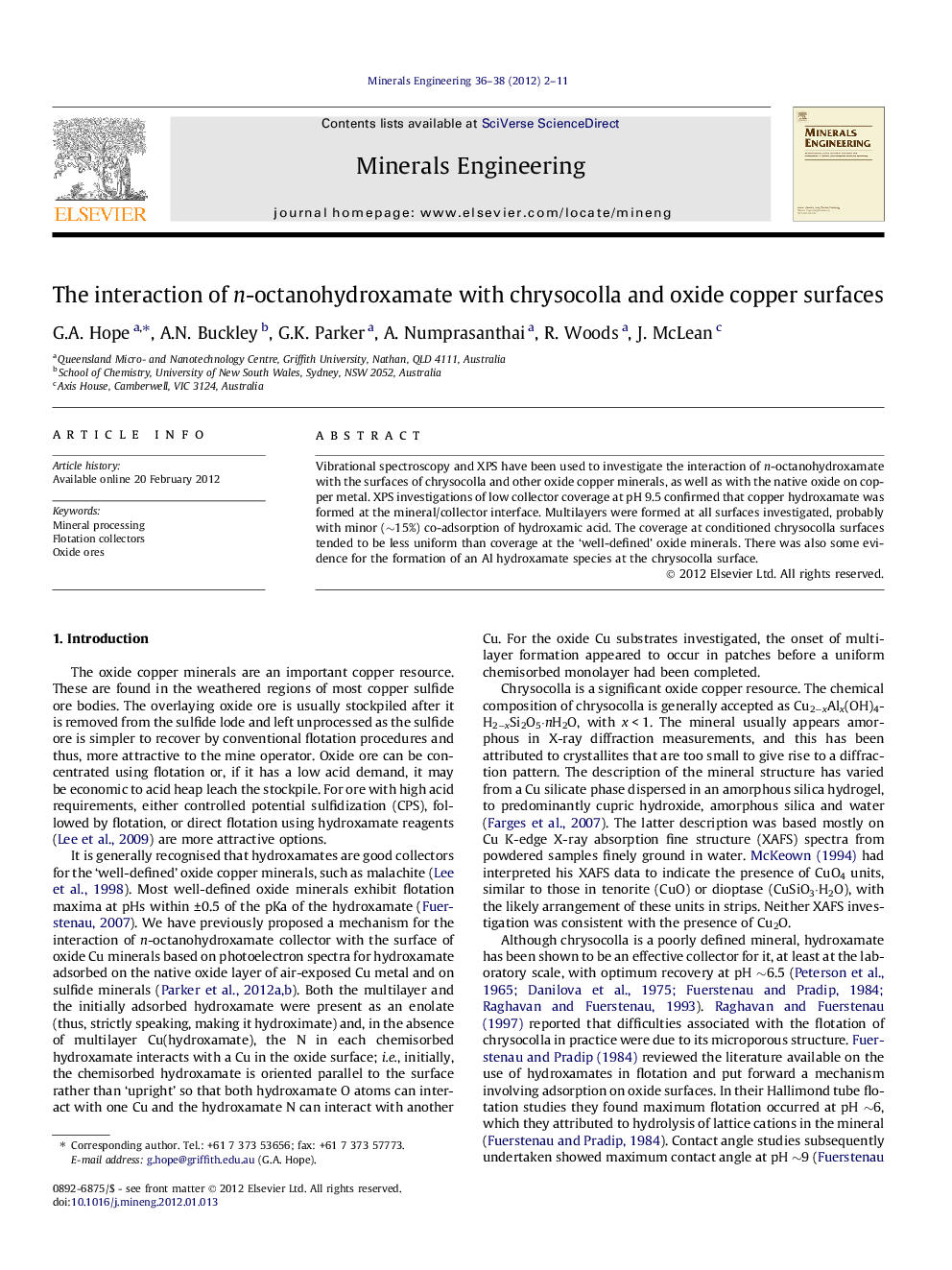| Article ID | Journal | Published Year | Pages | File Type |
|---|---|---|---|---|
| 233513 | Minerals Engineering | 2012 | 10 Pages |
Vibrational spectroscopy and XPS have been used to investigate the interaction of n-octanohydroxamate with the surfaces of chrysocolla and other oxide copper minerals, as well as with the native oxide on copper metal. XPS investigations of low collector coverage at pH 9.5 confirmed that copper hydroxamate was formed at the mineral/collector interface. Multilayers were formed at all surfaces investigated, probably with minor (∼15%) co-adsorption of hydroxamic acid. The coverage at conditioned chrysocolla surfaces tended to be less uniform than coverage at the ‘well-defined’ oxide minerals. There was also some evidence for the formation of an Al hydroxamate species at the chrysocolla surface.
Graphical abstractX-ray photoelectron spectra (N 1s) from conditioned chrysocolla.Figure optionsDownload full-size imageDownload as PowerPoint slideHighlights► Multilayer cupric hydroxamate formed at pH > 9 on all surfaces investigated. ► At low coverage copper hydroxamate formed at the mineral interface. ► Some evidence for Al hydroxamate formation at a chrysocolla surface.
